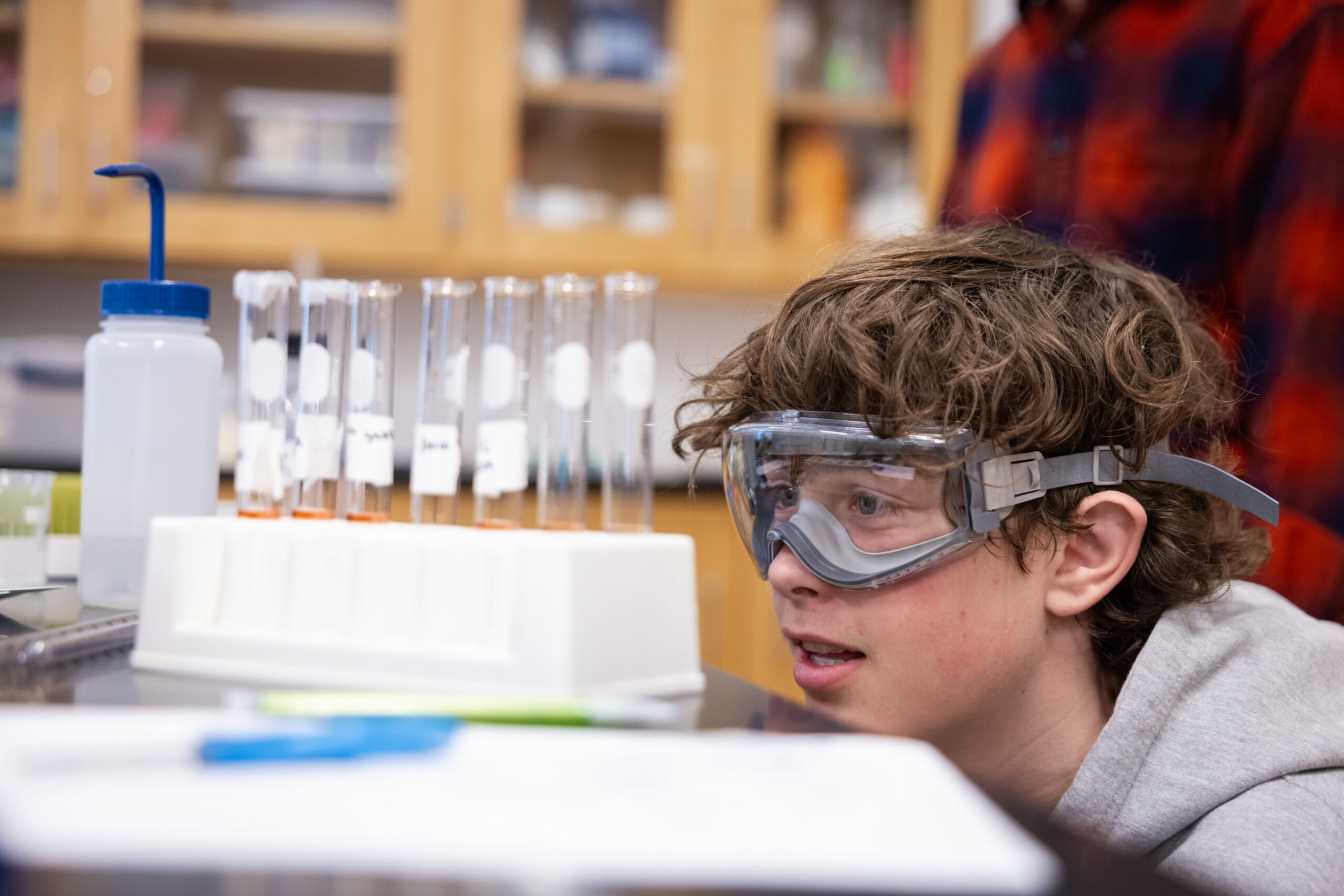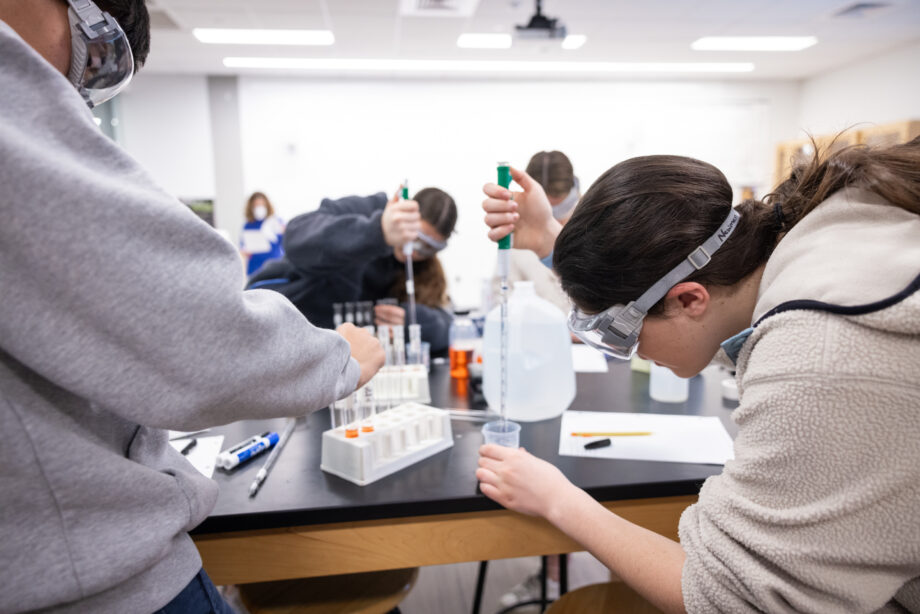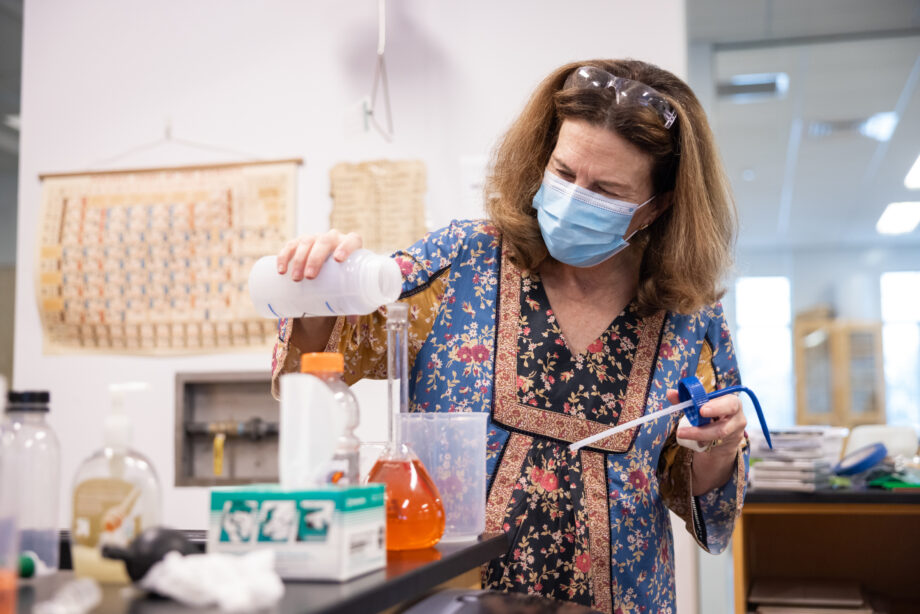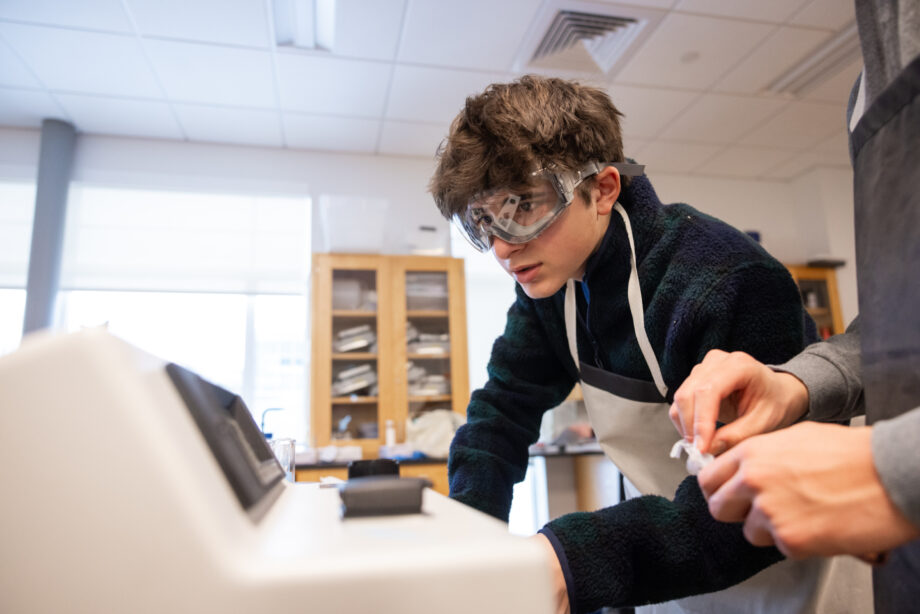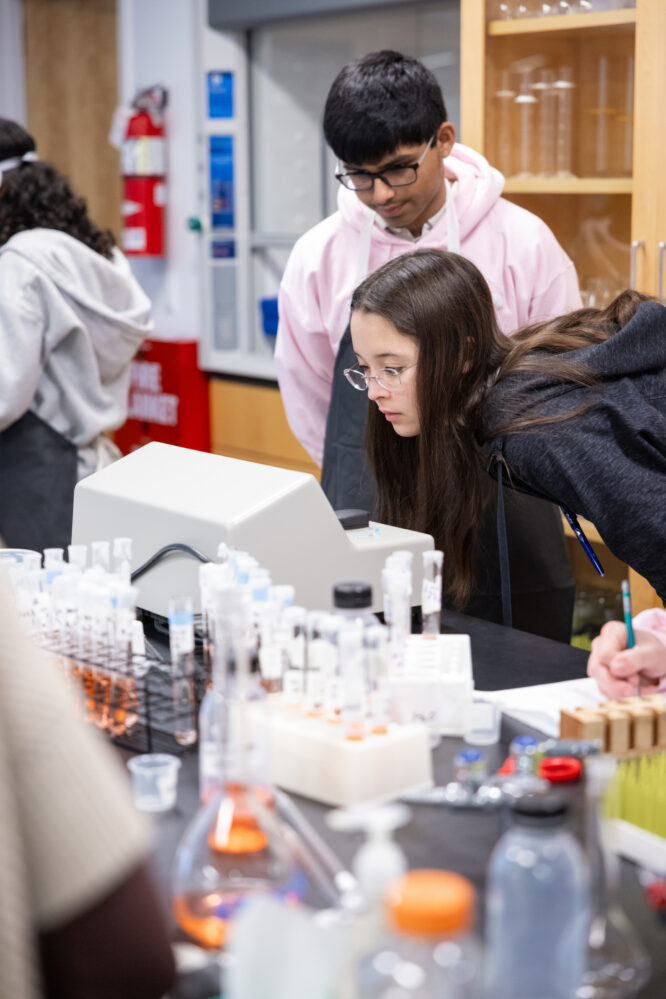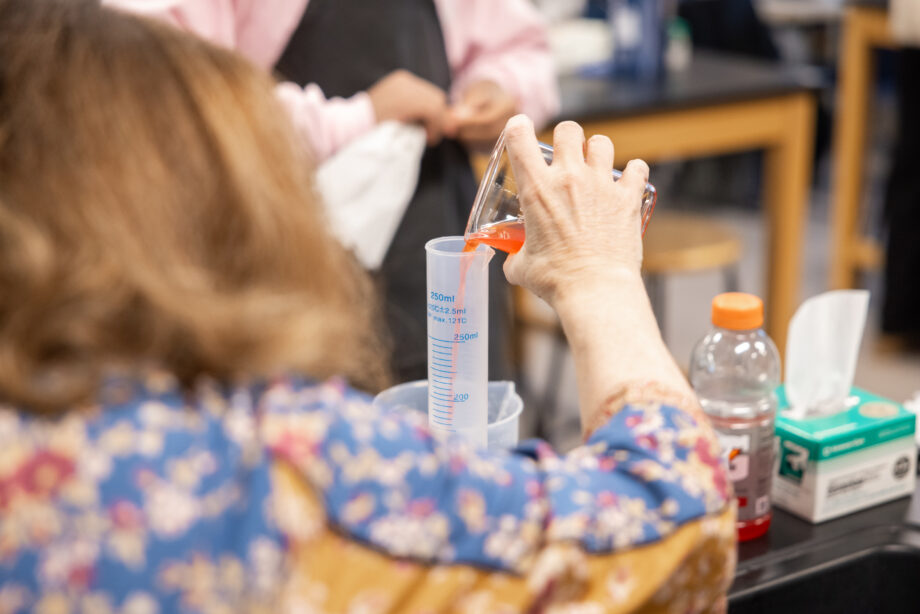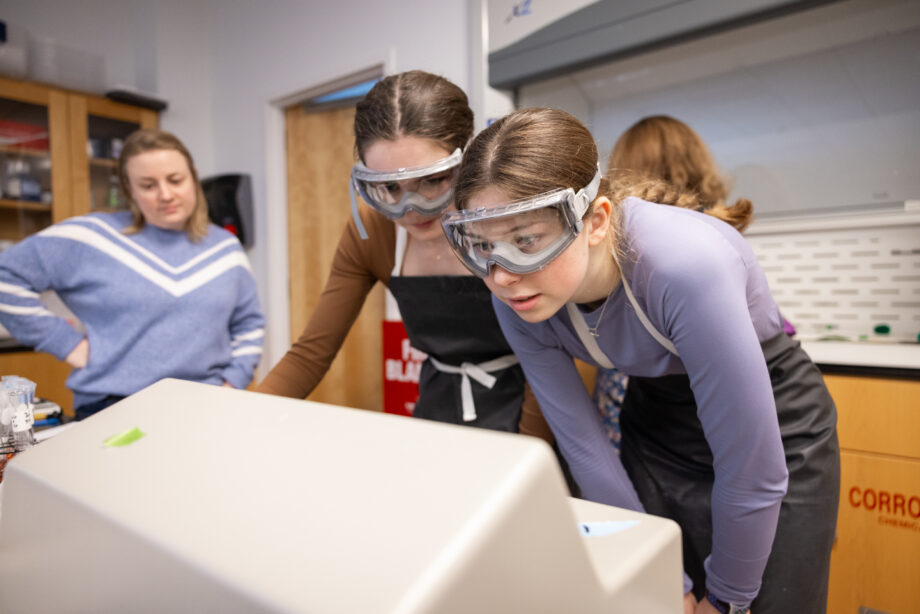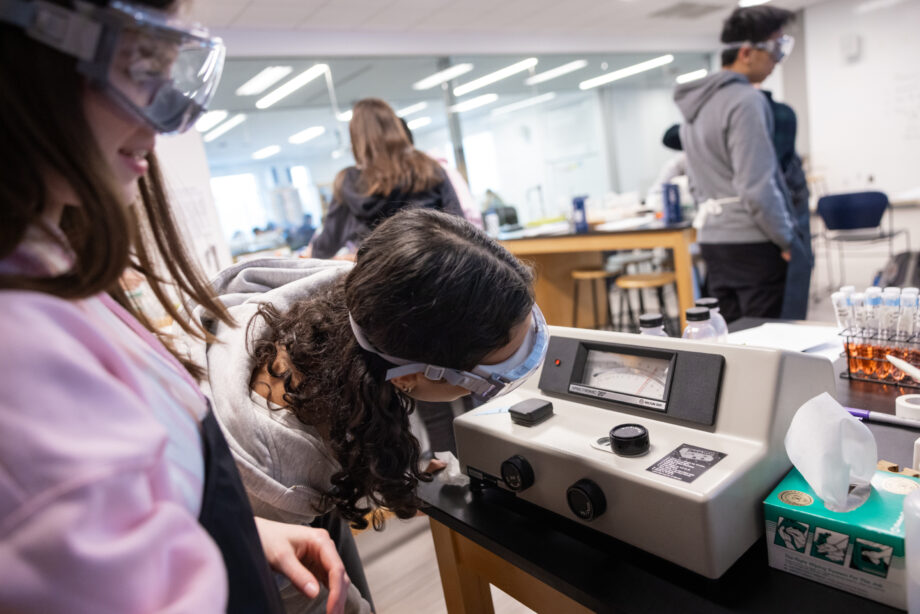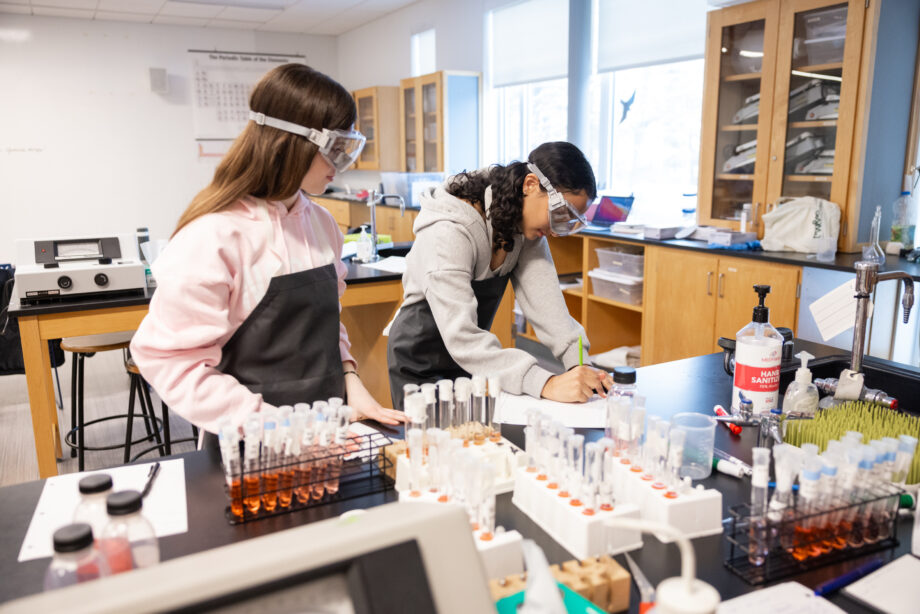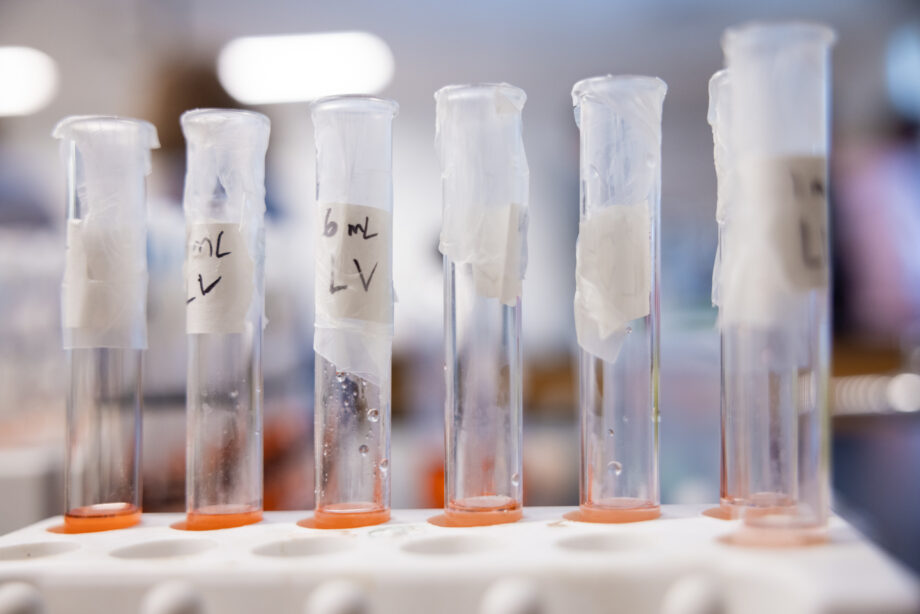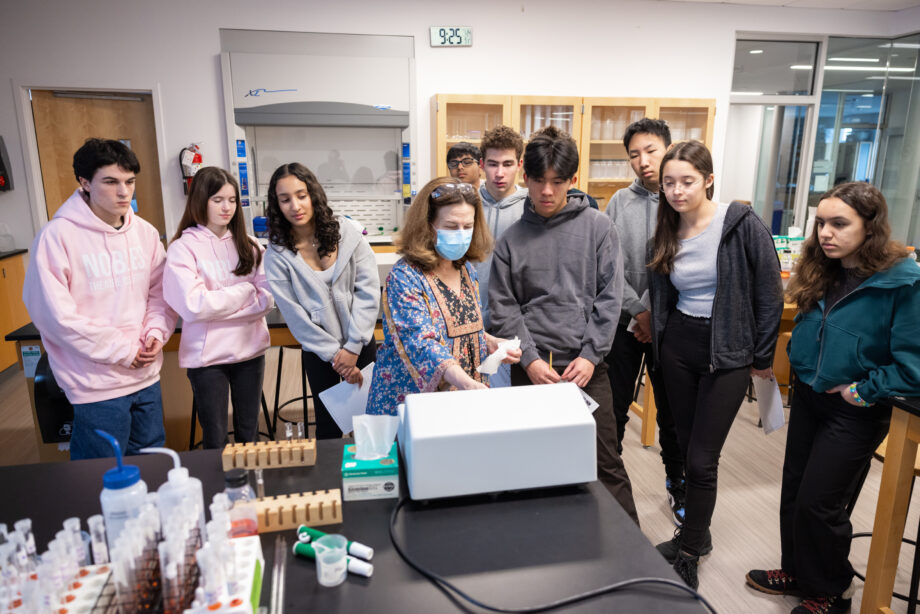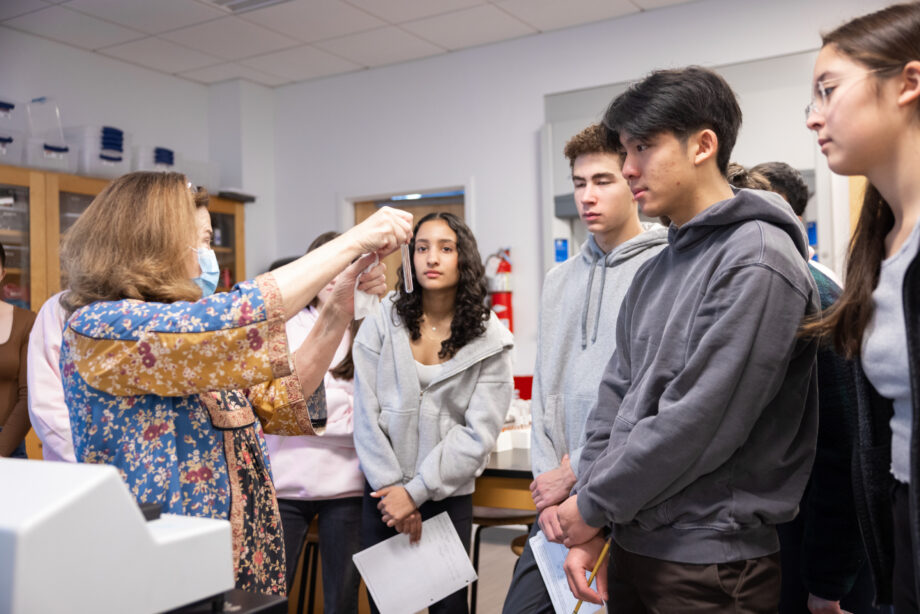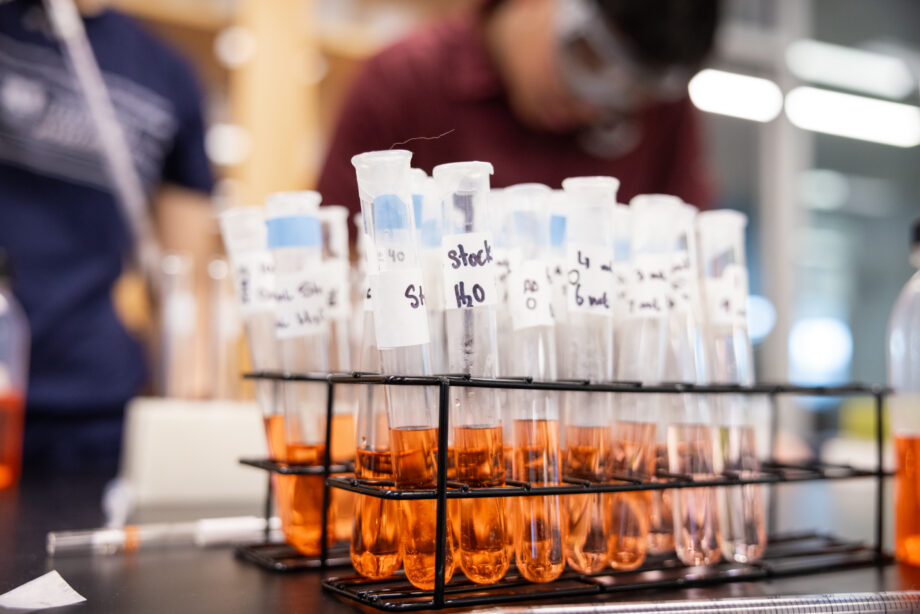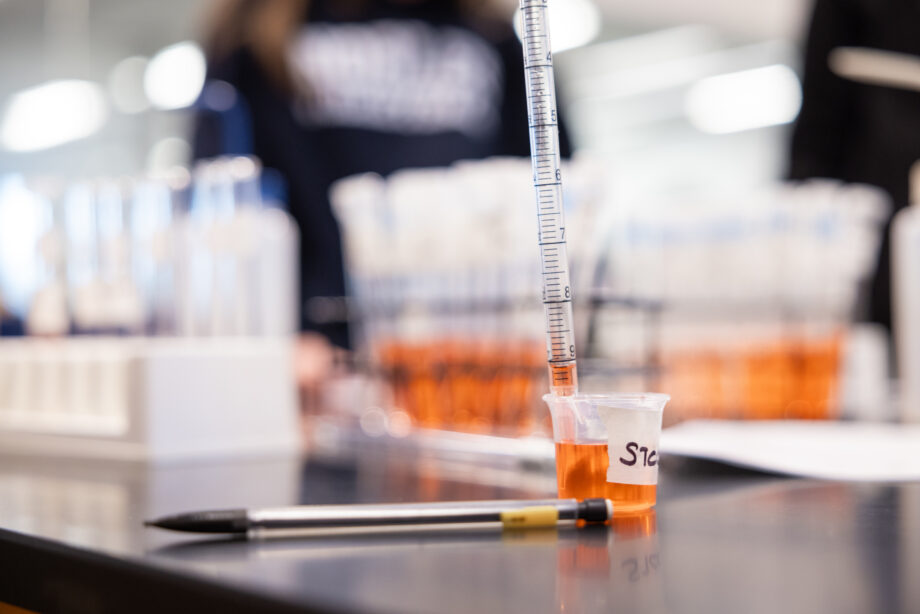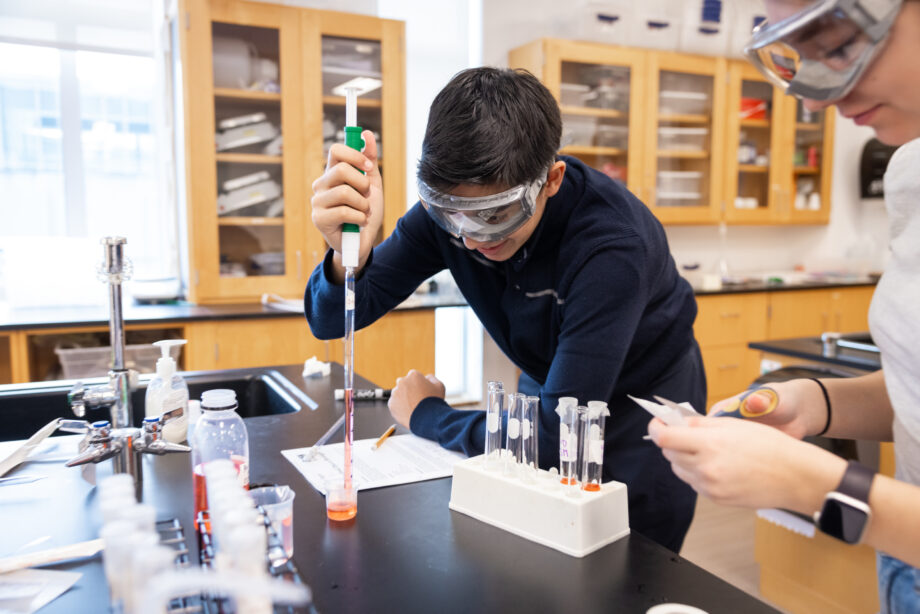Science faculty Sheila McElwee makes even the most challenging material relevant to students in Honors Chemistry, infusing the curriculum with connections to real-life situations and current events. The first semester begins with a project on combustion, during which students create and track an imaginary family with typical daily routines and activities for a final presentation on the tons of carbon dioxide produced by their family vehicle in a year. During Black History Month, each student writes a paper on a Black scientist, and students work in small groups to practice peer editing and learn about other influential Black scientists. Every module in the curriculum is carefully designed to ensure relevance and engagement for the students.
The spectroscopy project, which McElwee assigns in the second semester, is one example of the efforts demonstrating the pertinence of coursework to contemporary issues. During the project, students discuss the recent banning of red food dye in California through the California Food Safety Act, study the components of red food dye, research the foods and drinks they might consume daily that contain it, and measure that consumption. To gather their data, they use an analog instrument called a “Spec-20” to measure the concentration of red food dye in Gatorade. Students utilize a wide variety of skills from an area of chemistry called stoichiometry throughout this complex, multi-step project as they apply stoichiometry to a relevant issue.
“We had been studying aqueous solutions,” explained McElwee, “so they had to learn how to do a series of dilutions of very specific molarities and all of the associated calculations and develop a calibration curve using the data they gathered from the laboratory. After determining the concentration of the red dye in Gatorade using the Spec 20, they can then calculate the mass of the red dye in a bottle of Gatorade.”
After gathering their data, students examine those findings along with their research and write a 250-word abstract that encompasses their calibration curve and calculations, their conclusion about the quantity of red food dye in Gatorade, and their opinion about whether the dye should be banned in all foods or whether this was just an excessive overreach of state government.
McElwee explains that the students use the skills from the spectroscopy project, such as performing dilutions to determine molarity, straight through to the end of the year as they study acids and bases. “But it’s more about the analytical skills that they develop,” she adds. “The thinking about the relationship between the calibration curve and the data that they gather, seeing how those pieces fit and how you use the data to draw a conclusion—the building of that is what’s important.”





